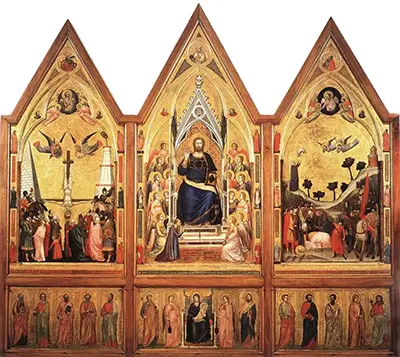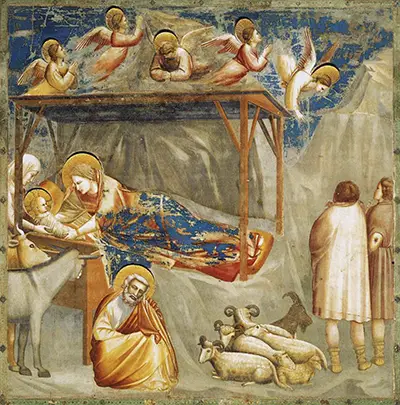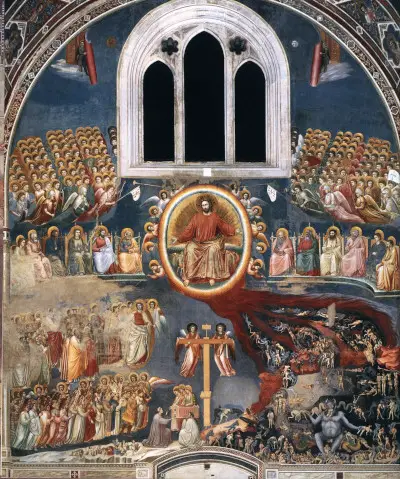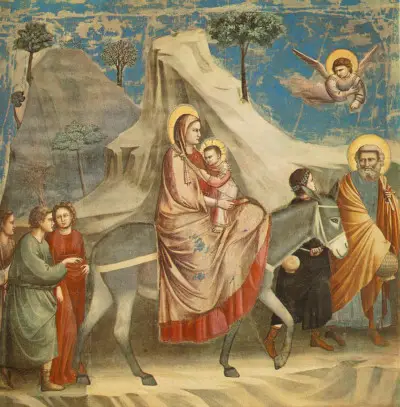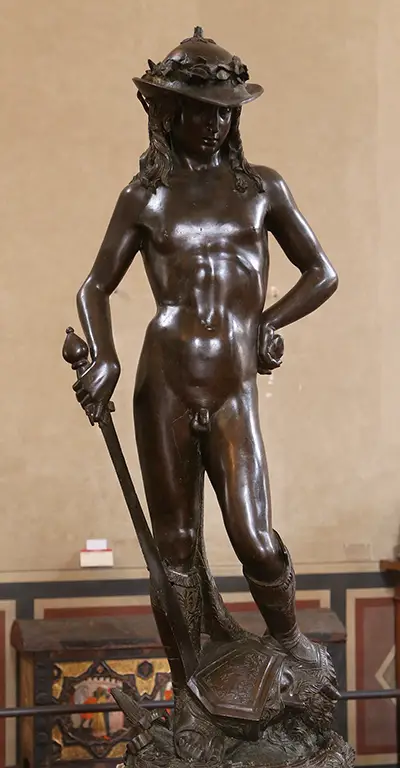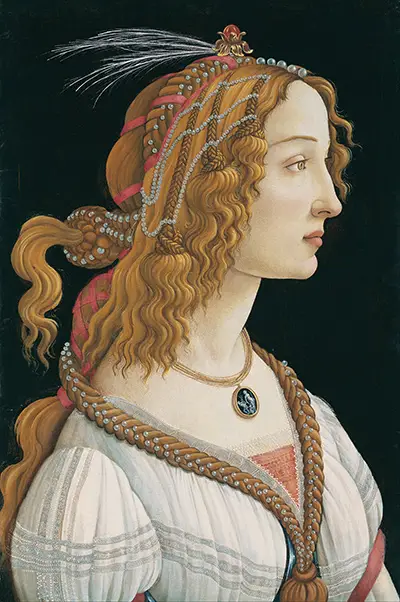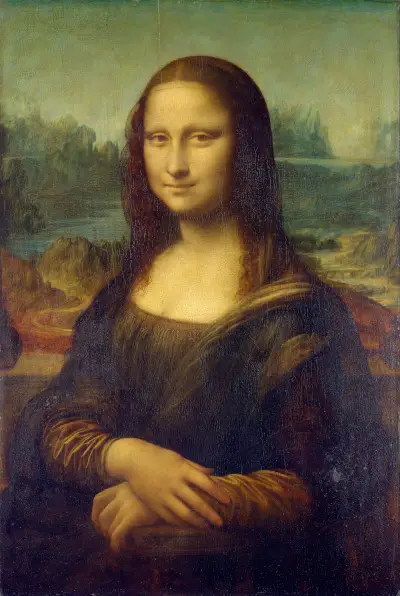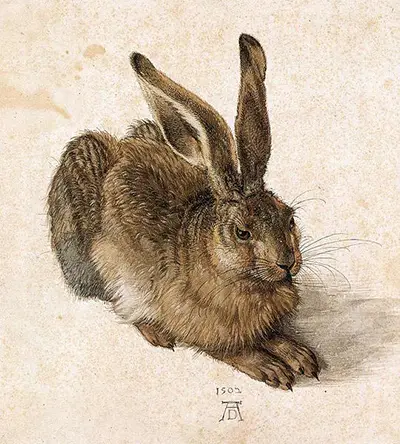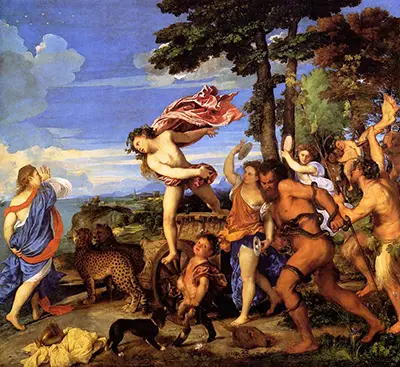The entry into Jerusalem by Giotto is a 200 x185 cm painting that shows a scene in the life of Christ. The image shows Jesus in the central position sitting on an ass and disciples following at a close distance on the left.
The crowd is cheering at the gate to Jerusalem while others spread clothes before him and some struggle to collect palm branches on top of palm trees. You can easily comprehend the story told by this painting by merely observing the painting is one among a series of paintings that Giotto painted about biblical parables and the life of Christ. The disciples in the image are wearing light and dark-rose coloured clothes with halos on their heads is a symbol of purity and holiness. The donkey legs are drawn to suggest movement with one leg bent and the other straight. You can clearly see the emotions of individuals in the crowd as well as those of the disciples.
Another essential element in the image is the two children trying to get some olive branches from the top of the trees. Their gender is unclear, and they are wearing similar white dresses to represent their angelic nature. Giotto is believed to have introduced the Renaissance style into the western art. He could paint realistic features, unlike his predecessors, who painted styled artwork in the medieval time. His artworks are not elongated and are three dimensional with real faces and emotions. The garments are also drawn to hang naturally, showing their weight and form. Giotto’s work always has humans as the main subject in the painting, and most of his paintings are about biblical scenarios. The figures in his paintings are carefully arranged to give the viewer a space in the scene. The scenes have a clear expression of humanity and the emotions of the individuals of the subjects in the image. Giotto expresses people emotions through their facial expressions, glances and crucial gestures.
Cimabue discovered the talented Giotto when he was a young shepherd boy. The painting of his sheep on rock drew Cimabue’s attention, and he approached him to ask him whether he would take him as his apprentice. At the time. Cimabue was the most renowned artist in Tuscany and Giotto got a chance to work in his workshop. Giotto’s artworks in Padua are also known to be an inspiration to a huge number of painters from North Italy such as Guariento, Jacopo Avanzi and Giusto de Menabuoi. The painting was painted in the years between 1304 and 1306 together with a series of other paintings about the life of Christ-like Jesus Betrays Christ, last Judgement, Pentecost and many more. You can find the Entry to Jerusalem painting and many more by Giotto at the Cappella Scrovegni (Arena Chapel in Padua).
More Renaissance Artists




 Giotto.jpg)
 Giotto.jpg)
